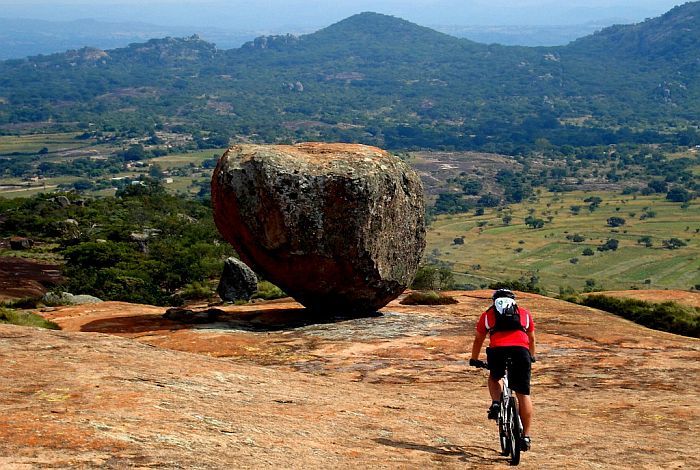See the dramatic granite boulders of this beautiful scenic area & enjoy walking, guided rock art tours and game drives.
The Matobo National Park is a Unesco World Heritage Site and lies just half an hour’s drive south of Bulawayo. This majestic landscape of massive granite boulders is imbued with great spiritual significance and is the ancestral home of the Matabele people. The Matabele chief Mzilikazi gave the area its name, Matobo, after the boulders which reminded him of bald heads.
The granite domes and kopjes of the Matobo hills echo the tranquillity and majesty of untamed Africa and have a spiritual energy and unique beauty. The numerous giant granite outcrops (‘koppies’) have eroded over thousands of years to conjure up spectacular balancing acts, perched at gravity-defying angles.
The Matobo National park is also sanctuary to some of the best-preserved San (Bushmen) paintings in Southern Africa. The area was a favourite of the British colonialist, Cecil John Rhodes. He arranged to be buried there at a beautiful spot high on the rocks aptly named World’s View. Indeed there is a mystical spirituality about the this place that calms, refreshes and rejuvenates the soul. (Perhaps even that of Cecil John Rhodes!)
The surrounding woodland savanna is home to a rich wildlife and cultural heritage. You find the highest concentrations of leopard and black eagle in the world here. There’s also a healthy population of the endangered black and white rhino and plentiful antelope. But you won’t find lion or elephant. The upside of this is that it is possible to explore the park on foot.
We recommend staying at either Camp Amalinda or Big Cave Lodge.

Thought we don't have any sample tours including the Matobo National Park, we can easily add it to a number of tours such as the Hwange Explorer or Zimbabwe Water & Wilderness. Ask us for a quote!